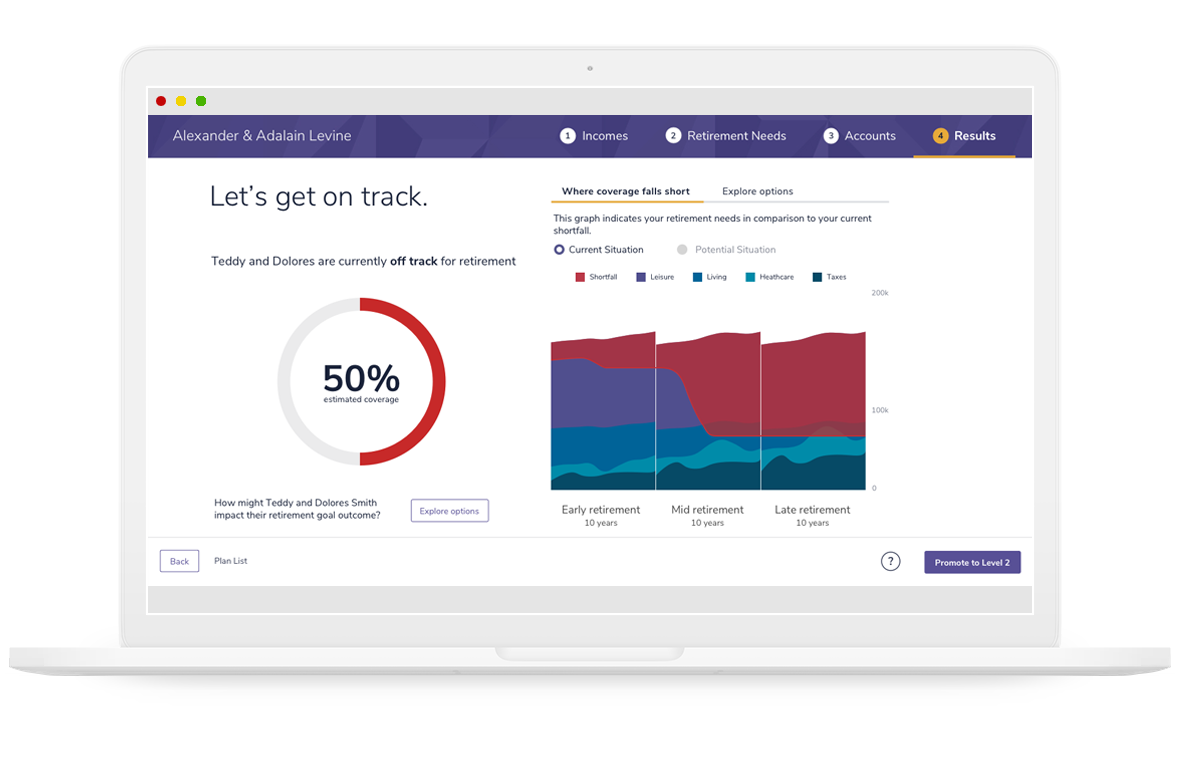


Instead of going through a lengthy process of data entry and report generation, an advisor can now enter in minimal information into the Retirement Planner and end up with a detailed report in under a minute, cutting down the average retirement plan generation from 1.5 hours to under 30 minutes.
By cutting down the time drastically, advisors can now create plans in front of their clients instead of waiting to do data entry until their client has left the appointment. The Retirement Planner is the company's first step into a simplified financial planning process, which will be expanded to other subjects (saving for college, making major purchases, covering long-term disabilities) in the future.
By selecting the Retirement plan, the financial advisor can bypass a lot of data entry and access a plan by only needing their client's names and ages. Due to the greatly shortened time creating a retirement plan using the Retirement Planner, this planning type can be done with the client in the office.
The only information the advisor needs is now an income for a client and co-client (if applicable). Detailed data entry is no longer necessary, unlike traditional financial planning.
The client and advisor can now see how much they can expect to need during three ten-year periods during retirement. They can add or change retirement ages, incomes, and estimates.
All retirement accounts are added in the next step in order to predict total coverage for retirement. Only retirement-related accounts like 401(k) in the US or RRSP in Canada can be added to save time. This will also make future tax predictions more accurate.
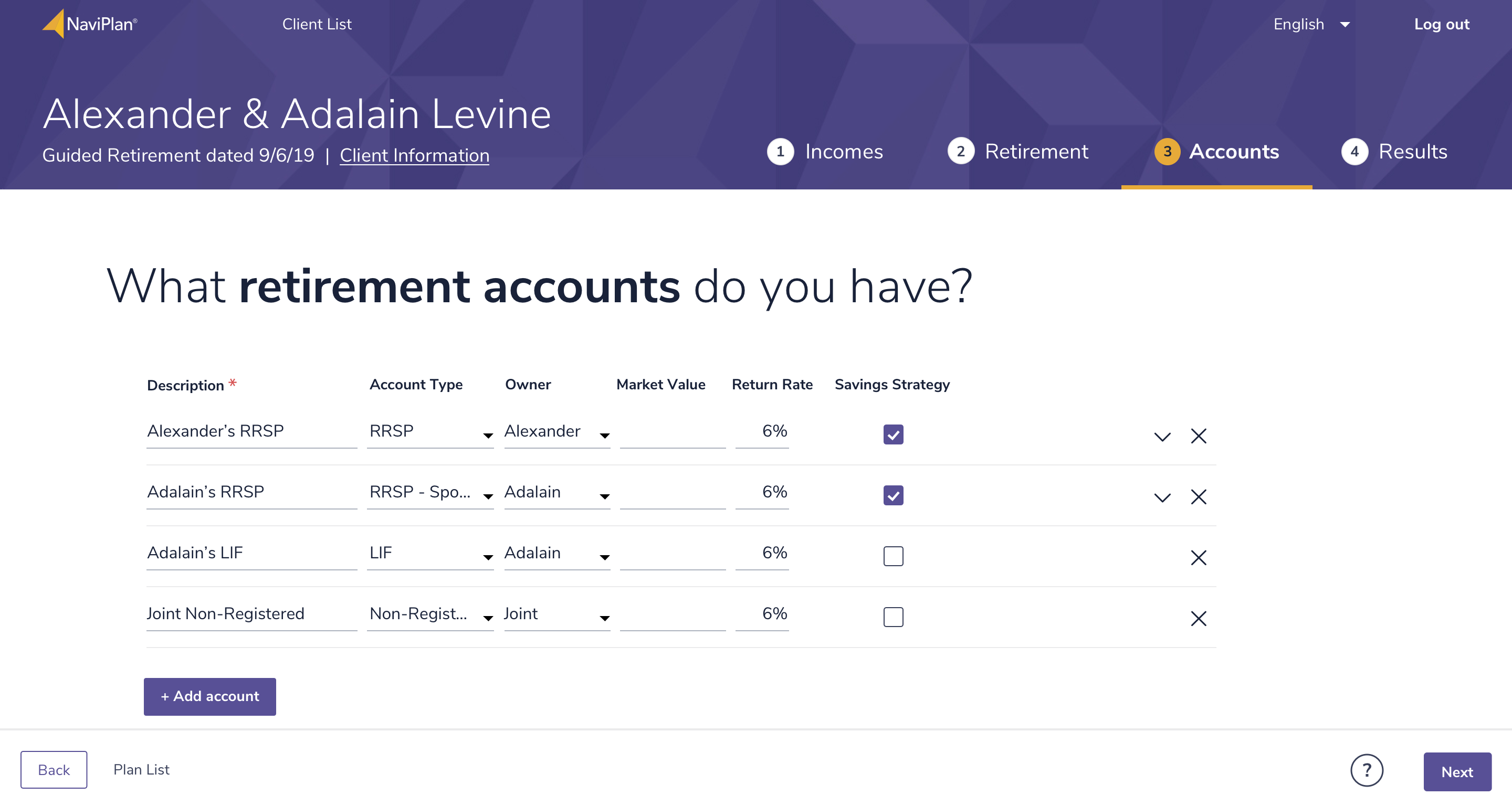
Lastly, a report based on all input information from the prior three steps is generated into a visually-pleasing report in under twelve seconds. Here, a client and advisor can modify the retirement plan by proposing to save more money before retirement or retire later in order to hit at least 90% coverage.
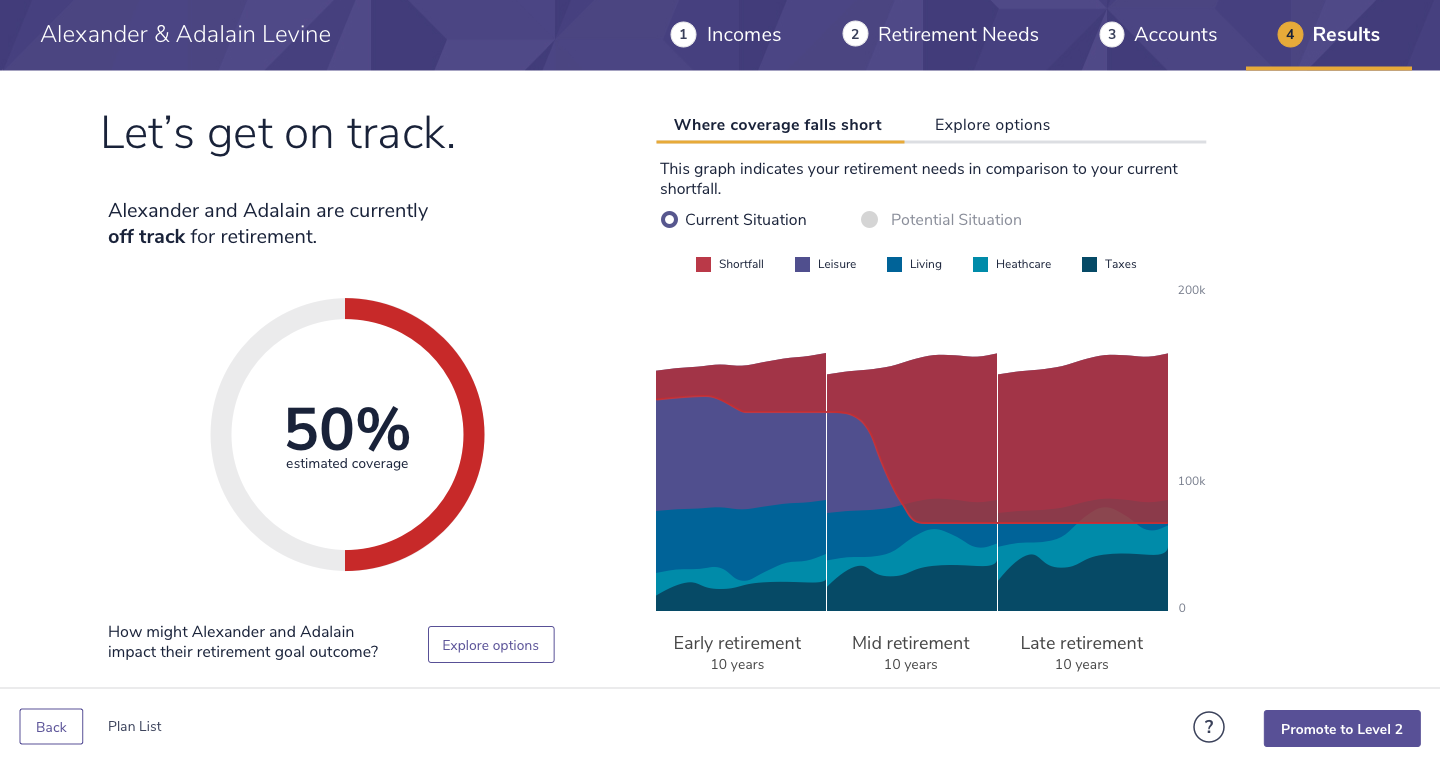
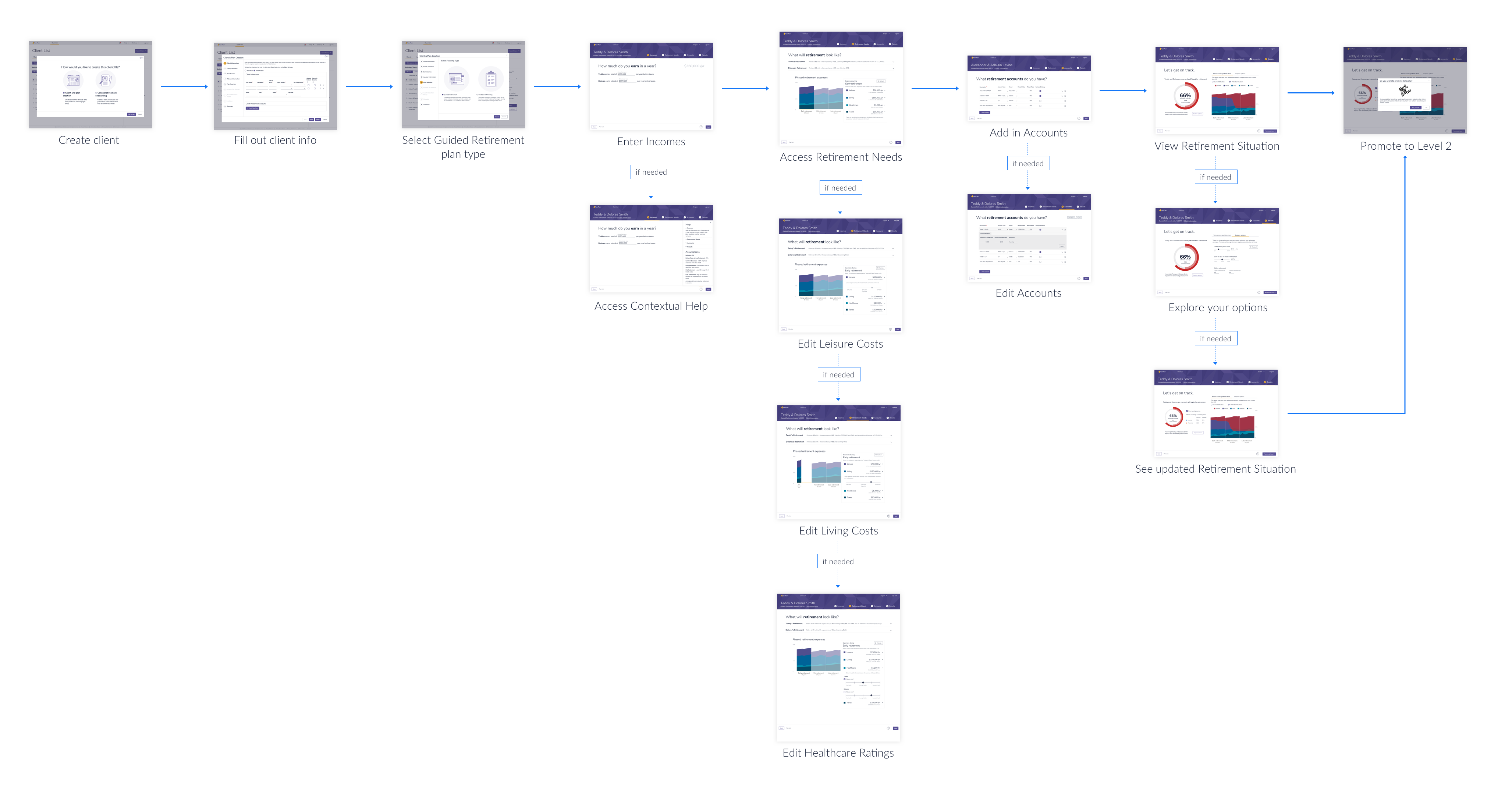
The Axure prototype was demoed at a financial technology conference, where it received second place overall. It received positive feedback from the judges due to its visuals, its massive improvement from the company's current offerings, and its innovation. Leaders in the financial industry tweeted about the demo of the Retirement Planner, leading to the highest social media buzz that our company has ever measured.
The beta test sign-ups have vastly exceeded all KPIs determined by the company. Through the use of feedback modals, we hope to achieve a 70% satisfaction rate of the product before its public release.
We looked to completely redesign the current method of creating a retirement plan in the software into a simple, streamlined process that can invoke conversations with a client instead of staring at a wall of numbers and values. The need for a quick retirement planning tool was determined by market research.
By invoking the latest technology such as third-party data integrations and proprietary formulas, retirement needs can be estimated quickly without any manual calculation by the advisor. Through research, we identified this opportunity to fill a gap in a current advisor's workflow--creating accurate retirement financial plans anywhere.
The current software relies on a lot of data entry to gather information about clients. After doing ten contextual inquiries across Wisconsin, Illinois, and Canada, we came to the conclusion that most advisors cannot do financial plans in front of their clients unless their clients can dedicate up to three hours for an appointment. Rather, financial advisors will jot down notes and fill out the information later. They may email their findings to their clients or wait until a scheduled meeting in the future. This means that a client will not know their latest financial information until at least a day or two later.
Unfortunately, due to legal issues, we can only access around 10% of our users for research. Our software is also sold to large corporate clients, whose users cannot be used for research. Based on collaboration with Sales, who works with corporate clients regularly, we were able to get an idea of a general user journey and workflow for all users, regardless if they're personal (retail) or enterprise users.
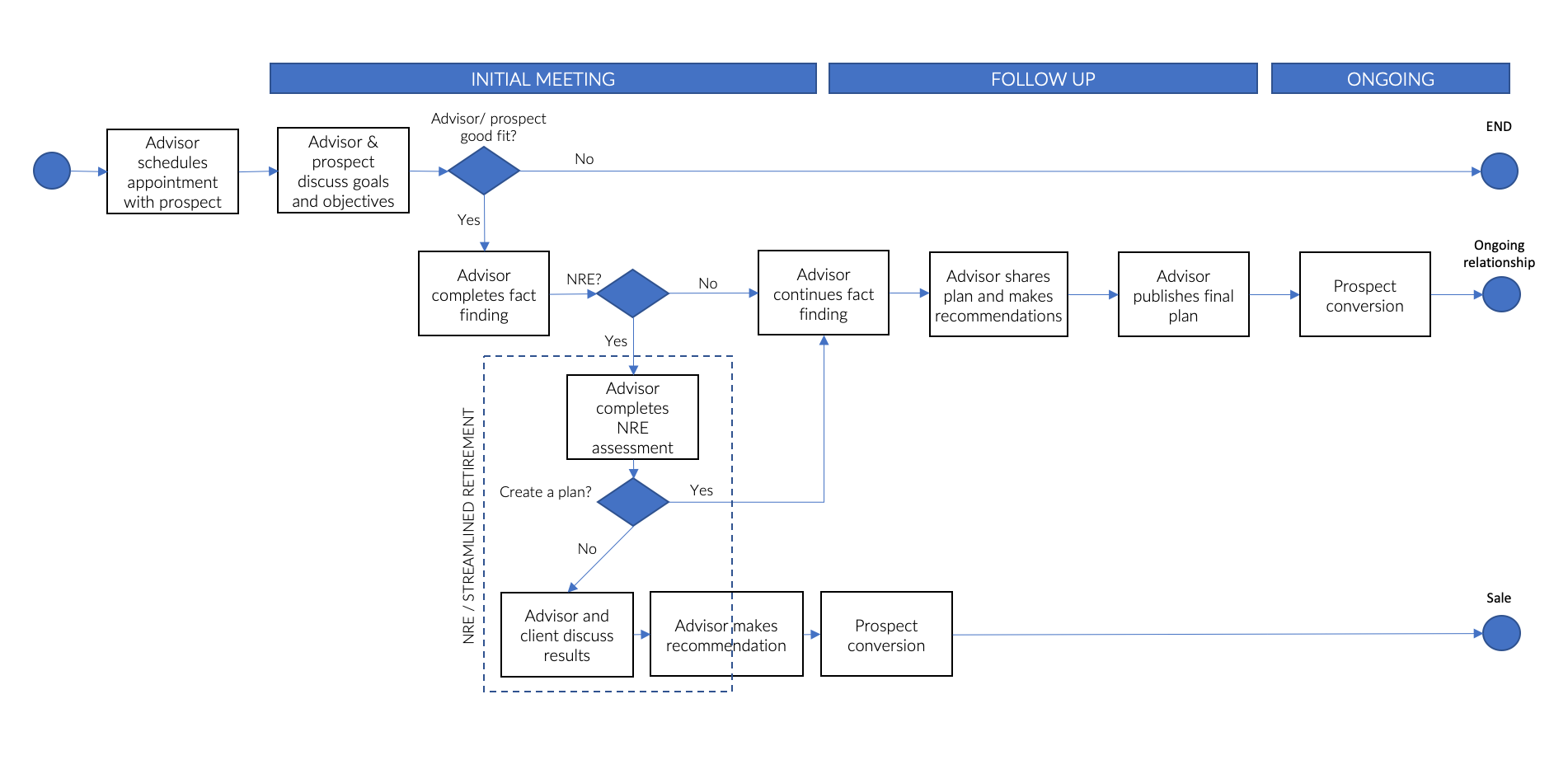
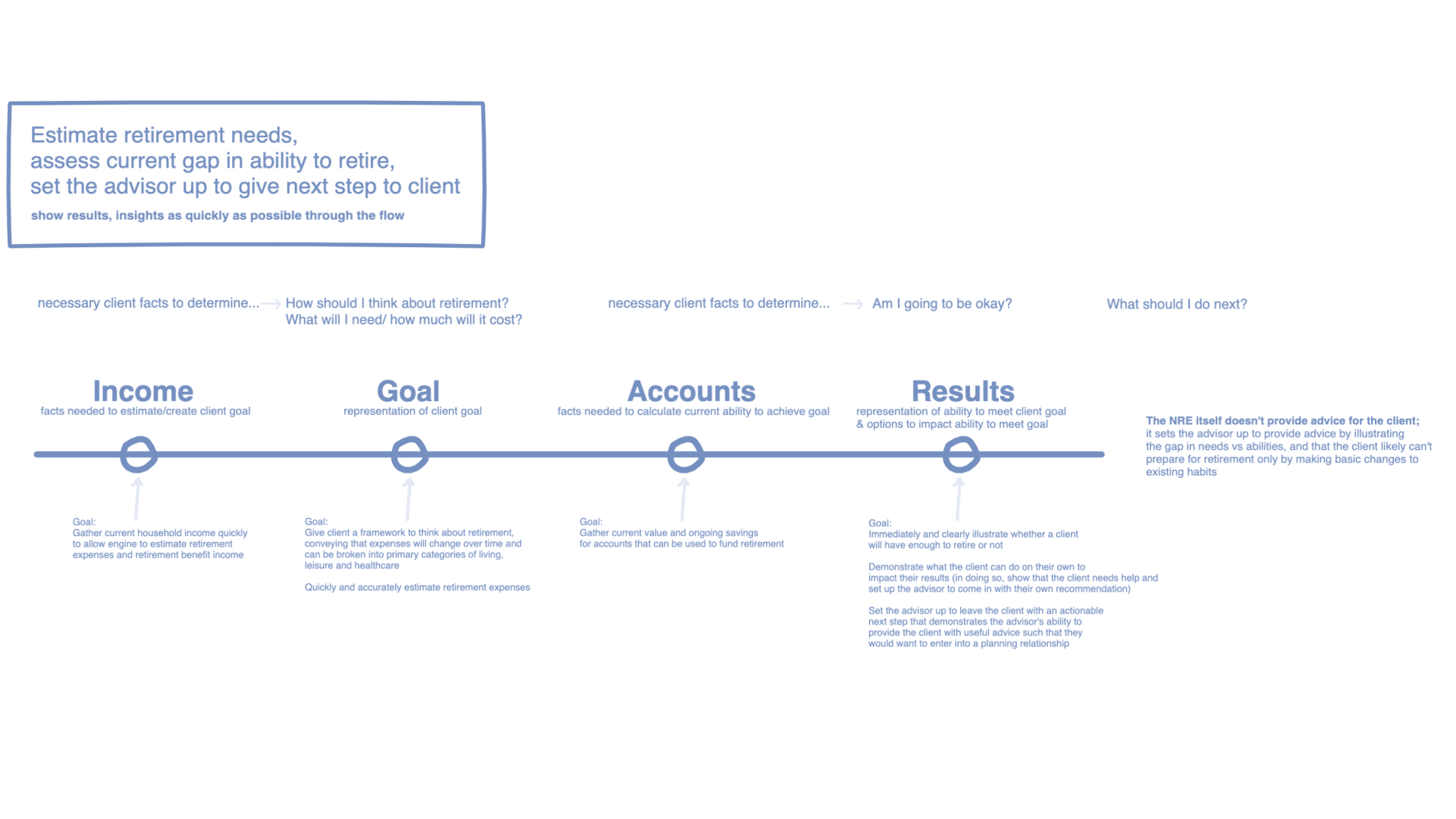
Our first attempt to address this challenge was with research we exclusively gathered from advisors. Accessing clients of our financial advisors would cause a lot of legal issues, so we had to accept that we would have to design based on assumptions.
There was also reluctance within the company to venture too far from our standard visual design. While we had just overhauled the visual design of our product in March 2019, we were wanting to first release a version of the Retirement Planner that matched current visual designs and then update the Retirement Planner UI when we release the future iteration of the visual design. I collaborated with a motion designer at an agency, who mentored me on how to create lively and modern UI animations using After Effects.
The following represents our initial design based solely on assumptions of how clients of financial advisors want to see their information. We would later employ the services of an agency to understand clients.
The agency reviewed our work and suggested that we should be willing to venture from our standard visual design because we are using Retirement Planner as an evolution of our product. Working with the visual designer, we created style tiles to conceptualize a new look for the Retirement Planner that could later be expanded to a revision of the current software itself.
We decided to take a new approach to the way that UX and development work together, so I became a pilot for testing the integration of a UX designer on a development team. I work with the UI team for the Retirement Planner, where I act as a consultant when edge cases or microinteractions need a design.
I maintain an active Invision prototype where the developers can use the Develop feature to grab dimensions, pixel sizes, colors, and margins for all UI elements. Additionally, I work ahead of development with the Business Analyst (also known as a Project Manager in other companies) to design various states of the Retirement Planner before development will need them for their sprints.
Though the beginning of this project was rough and ill-defined, bringing in an agency and product owner to help alleviate fears of what UX wanted to do to make the Retirement Planner a success. I have enjoyed working with development to ensure we deliver a top-notch product
I realized that designing without a critical understanding of our users can be difficult, but there can be reasons behind being unable to reach all the users we need. Assumptions are something that we are taught to fear as designers, but there can be situations where it is impossible to get all the research we need for a subject. We were lucky to have an agency who could research for the gaps we couldn't fill due to legal reasons.
The beta test and KPIs helped to prove that our concept was resonating with our users and that we could use the same pattern for future projects like an education planner, major purchase planner, and so on.